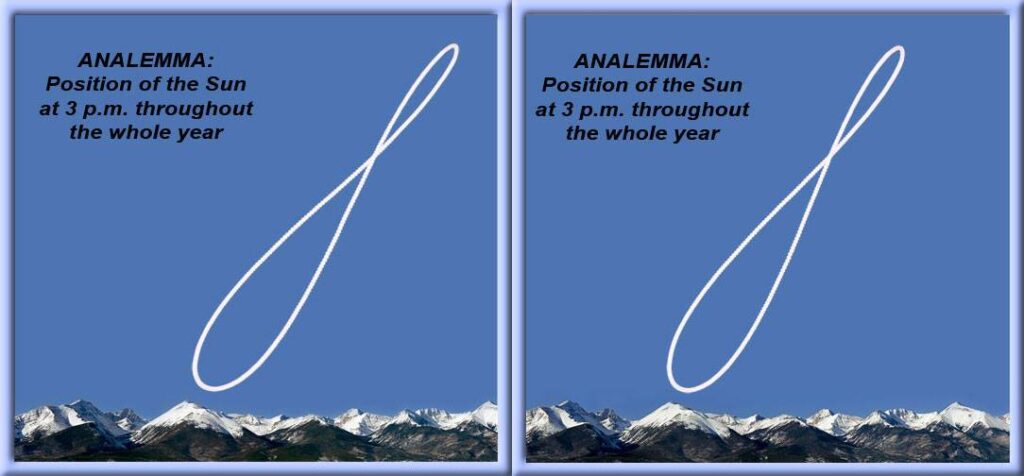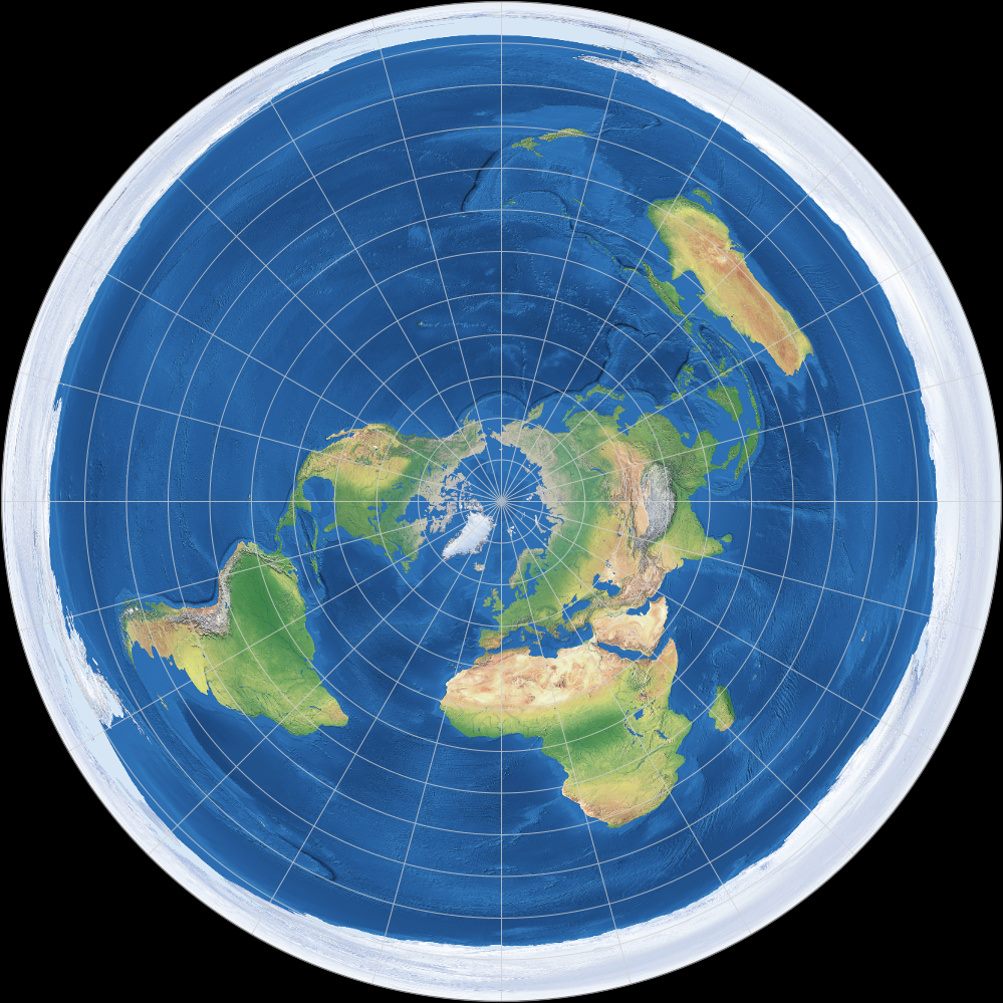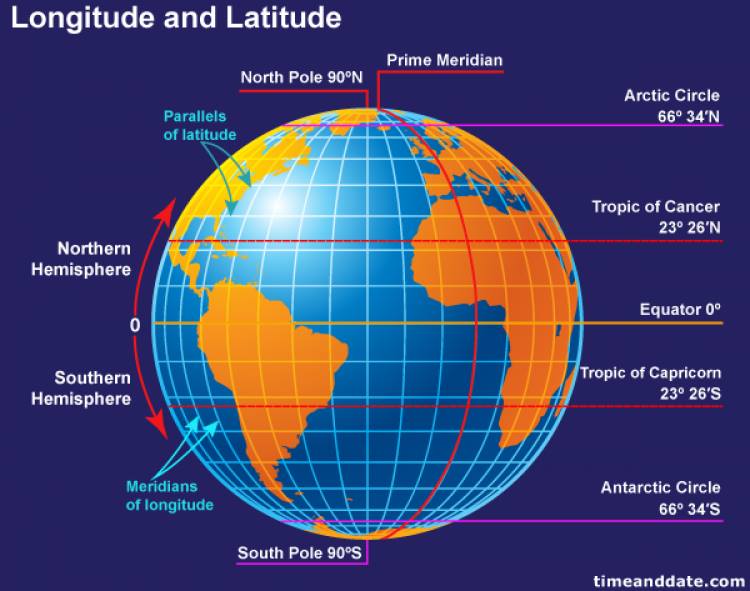The Bible commands us to test all things. I was challenged by my good friend Adam Bishop to explain how on a Flat Earth Cosmology the sun and moon would stay the same speed as they approached the outer latitudes when progressing to winter solstice due to the extended distances they would have to travel. He asserted that we know they stay the same speed, it’s observable and measurable. Well, I was certainly challenged and sent me back to the cosmology drawing board so to speak. I was a bit discouraged. I have pondered and studied many things on cosmology for over three years, I never heard of nor considered this argument/challenge to the flat earth accepted projection. I picked myself up and began to research it out. I think you will be as surprised as I was delighted to find good reasonable evidence and arguments to uphold this cosmology.
Though this video does not deal with the seasonal changes of the sun’s speed, it highlights the daily changes in speed measured every 10 minutes and mathematically determined that the sun’s speed at apparent noon or zenith is over twice the speed than at at sunrise or sunset. This proves without a doubt the sun is not 93 million miles away as the Copernican/Kepler models falsely assert.
Back to the seasonal speeds that must change in order for the AzEq projection of the shape of the earth to be true.
The analemma is a term in astronomy used to describe the plot of the different positions of the Sun or the moon on the sky recorded at the same time of day and from the same location, each day through the calendar year or month. You can see a solar example in the picture above. The sun travels through it’s analemma annually bouncing between the Tropic of Cancer through the Equator, then on to the Tropic of Capricorn as it travels to our winter solstice. Then it returns on it’s circuit to our summer solstice. Remarkably, the moon moves through this circuit monthly, This then makes perfect sense when you look at what God hath said in Psalms 19.
The analemma is a term in astronomy used to describe the plot of the different positions of the Sun or the moon on the sky recorded at the same time of day and from the same location, each day through the calendar year or month. You can see a solar example in the picture above. The sun travels through it’s analemma annually bouncing between the Tropic of Cancer through the Equator, then on to the Tropic of Capricorn as it travels to our winter solstice. Then it returns on it’s circuit to our summer solstice. Remarkably, the moon moves through this circuit monthly, This then makes perfect sense when you look at what God hath said in Psalms 19.
Psa 19:1-6 The heavens declare the glory of God; and the firmament sheweth his handywork. 2 Day unto day uttereth speech, and night unto night sheweth knowledge. 3 There is no speech nor language, where their voice is not heard. 4 Their line is gone out through all the earth, and their words to the end of the world. In them hath he set a tabernacle for the sun, 5 Which is as a bridegroom coming out of his chamber, and rejoiceth as a strong man to run a race. 6 His going forth is from the end of the heaven, and his circuit unto the ends of it: and there is nothing hid from the heat thereof.
Okay, using the analemma of the sun as a litmus test for varying speeds of the sun on the flat, motionless, earth we find that helio-astronomy states that the sun moves faster in the winter due the to supposed ‘fact’ the earth is in ellipse orbit. Rejecting that idea as the premise, we now find this phenomenon of winter acceleration of sun & moon addresses the AzEqDist model southerly latitude speed argument very nicely.


Pike’s Peak, CO
This analemma photo is a composite of 365 images of the Sun, made every day at 3 p.m. in Colorado. The shape, resembling the figure 8, comes from This analemma photo is a composite of 365 images of the Sun, made every day at 3 p.m. in Colorado. The shape, resembling the figure 8, comes from the presupposed ‘fact’, that Earth’s supposed orbit is an ellipse, and therefore Earth’s speed is not constant. Close to the Sun (in winter) it moves faster. These are simply presuppositions to the Heliocentric view of Kepler and Copernicus. It is amazing how any number of ideas can ‘explain’ these movements of the heavenly bodies. Why not just believe the Bible!
Psalm 104:5 Who laid the foundations of the earth, that it should not be removed for ever.
From the FE Azimuthal Equidistant projection which is a standard that most of the FE community has accepted as true, the question that Adam asked above was a very pointed and challenging one. We must show simply how our understandings work out in reality in light of his question. In the photo below you will notice how the longitudinal lines diverge from each other as the lines move away from the pole toward the edge of the chart.


longitude lines [from the pole] diverge as they progress to the edge. For sun to travel 24 hours in this locality they must speed up to account for extra distance.
As a community, we must address why and how the sun/moon will race more quickly as it progresses to winter solstice and then slows to our summer solstice. In my estimation the heavenly bodies consist and move by the power of God, that is my how explanation of God throttling up and down His creation. The why remains mysterious besides the obvious need for it to do so that we can have the circuits of the sun to make sense in reality.
As a community, we must address why and how the sun/moon will race more quickly as it progresses to winter solstice and then slows to our summer solstice. In my estimation the heavenly bodies consist and move by the power of God, that is my how explanation of God throttling up and down His creation. The why remains mysterious besides the obvious need for it to do so that we can have the circuits of the sun to make sense in reality.
Col 1:15-17 [Jesus Christ] Who is the image of the invisible God, the firstborn of every creature: For by him were all things created, that are in heaven, and that are in earth, visible and invisible, whether they be thrones, or dominions, or principalities, or powers: all things were created by him, and for him: And he is before all things, and by him all things consist. [set together, exhibit]
These ideas also tend to beg questions about time and how is it determined. We know that at the equator, the sun travels at 1000 nautical mph over 15° of longitude. If FE is your premise, then sun must slow in the N. latitudes for the summer solstice to about
777 nmph[nautical miles per hour] over 15° of longitude which in reality causes more questions, what gives?
LONGITUDINAL CONVERGENCE & DIVERGENCE FROM THE EQUATOR
On a spherical reference surface of the earth such as a globe, lines of longitude are not parallel (as opposed to lines of latitude), rather they converge toward the poles. The ground distance of a degree of longitude is at its greatest about 60 nm at the equator and decreases to 0 at the poles. At 40° latitude, one degree of longitude is about 46.l nm , and at 60° latitude, it spans a distance of around 30.1 nm. The longitudinal convergence at the Tropic of Cancer 23.5°N is 51.8 nm. Using that number we can determine that 51.8 nm X 15° longitude will give us the hourly transit rate of the sun at northerly summer solstice = 777 nmph.
On a flat Azimuthal Equidistant projection, the lines of longitude converge to the pole from the equator, [same as sphere] and diverge [grow apart], from the equator to the edge. Basically, at each Tropic line we will add or subtract 8.2 nm to the longitude convergence/divergence respectively. So the calculation for the Tropic of Capricorn is as follows. The longitudinal divergence at the Tropic of Capricorn 23.5°S is 68.2 nm. Using that number we can determine that 68.2 nm X 15° longitude will give us the hourly transit rate of the sun at winter solstice = 1023 nmph. Circumference of the Tropic of Cancer based on the above calculations are 18,648 nm, the Tropic of Capricorn is 24,552 nm.
So, for the FE Azimuthal Equidistant projection to be valid the sun’s transit at the Tropic of Capricorn needs to reflect the extensive distance that is added by a flat earth cosmology. The difference we calculated based on the previous para is 24,552 – 18,648 nm = 5904 nm. This means that the speed of the sun’s transit in a 24 hours period will have to increase in reality to match the additional distance that it has to travel as it attains winter solstice. I believe that is why we get extensive summer daylight in the summer and very shortened in the winter according to our ‘northerly’ perspective. Likewise, though for different reasons those that live in the outer latitudes have extensive daylight in their ‘summer’ yet it is our winter. Keep in mind according to the FE viewpoint the sun is localized and diminishes out of sight by distance over the plane of the earth’s face.
POINTS TO PROVE OR CHALLENGE
1. a cartographer can examine the AzEqD projection, compare countries like NZ, and Aus with known surveyed breadth measurements to show the longitudinal divergence is creating a distortion with reality or reflects reality.
Globe model nomenclature
2. Actual time frames of sun transits both inner and outer latitudes during solstices at the Tropics lines respectively ignoring the bias’ of summer/daylight savings time.
3. Some FE models suggest the sun/moon are changing elevations as they transit to the southern hemisphere. This elevation differences should be proven with geometry and theodolite measurements of same at each Tropic line at appropriate solstices.

QUESTION AND ANSWER SECTIONS there are from FB friends thanks for your testing of the spirits and ideas in this blog, God bless you.
Mark Opiola Q?
Great article! One thing I would like to add which I didn’t see covered in the article is the sun’s elevation. If the sun speeds up yet provides am equal length of sunlight to the southern region it would seem that while the sun speeds up it also rises in elevation. What are your thoughts?
John McGlone A:
I think that the elevation of the sun must be higher in the southern hemisphere which would be the reason of their extended sunlight hours during their ‘summer’. [Dec 22 the day is 14H 34M] The sun would spiral down getting closer to the earth in the Northerlies and slow down during their winter our summer….the model I have seen that explains this spiraling gets it backwards. The sun must be farther away in the southerlies in order to give more daylight to explain their extended days. Does this makes sense?.
Mark Opiola:
That makes complete sense and what I’ve been thinking too. Have you seen the video of the person using a glass paperweight over a flat earth map and shining the flashlight? That’s another compelling model. The atmosphere then could direct the light either north or south. Just a thought. There’s still so much we don’t know. Have you heard about Croww777 lunar wave phenomenon? It is interesting. He thinks it happens at a certain time on the equinoxes. He also discovered that the equinoxes don’t match up exactly to the calendar dates. The last equinox was March 20, but the actual equinox, equal day and night, was more like March 17.
Frank Zieglar Q:
Your article is confusing – to me at least. You state that the sun goes from the Tropic of Cancer to the Equatorial back to the Tropic of Cancer. What about the Tropic of Capricorn?
You also state that your friend challenged you on the issue of the sun stays the same speed and that it’s been proven, but you then later state that the heliocentric model the sun is faster in winter because the earth is closer to the sun.
So is the sun staying the same speed or is it faster in one season? Your article states both.
In the comments here you state that you believe the sun is closer to the earth in one season and higher in another season but I’m confused about which you think is which. Doesn’t the analemma prove that the sun is higher when it’s around the north and the Tropic of Cancer? The analemma also shows a small circuit during this time period as well. That’s how the analemma looks to me – High with small circuit in July.
The circuit of the sun above the FE to my understanding is this…
During the northern summer around the Tropic of Cancer the sun is moving at its slowest speed, it greatest height, and it’s smallest circuit. This accounts for long hot summer days in the north during this time of year. The sun is moving slow causing longer daylight hours and lots of heat. If the sun was at its lowest point then it would not be livable conditions. The sun being at its highest point makes it bearable and makes more sense when considering the shape of a dome structure. The center is higher. When the sun reaches its northern most point this is called the summer solstice – usually around June 21 I think. From this point it starts moving southward and starts heading towards the fall season.
As the sun crosses over the equator this is called the Equinox. Usually around September 21. There is a phenomena where everyone can look due east and due west to see the sunrise and sunset. It’s a trick of perspective in my opinion.
The sun continues its path southward moving us into the northern winter. When the sun reaches the Tropic of Capricorn then it’s moving at its fastest speed, lowest height, and largest circuit. The fast movement makes for short daylight hours in the north and less heat for the earth. When it reaches it southernmost point at the Tropic of Capricorn, called the winter solstice, usually around December 21. It then starts moving back towards the north, moving us towards the northern spring.
It crosses the equator again with another Equinox around March 21. Continuing until it reaches its northernmost point around the Tropic of Cancer and starts the cycle again.
The sun MUST move faster is the south as it has to cover a larger area within the same 24hour period. It’s like the teeth on a bicycle gear. When the gear makes one revolution the outer teeth actual move at a greater speed than the inner teeth do. Even though they both make the same exact one revolution.

John McGlone A:
Hey Frank sorry for the confusion yes it should be Tropic of Capricorn not cancer in the article I will fix that as soon as I’m able to get to it on my PC. You make a good point about the Dome constraints meeting the spiral must be higher in the northern latitudes because of the shape of the Dome but that’s presuming that the Dome is x amount High and the sun is not significantly lower in that Dome than we think. I think you missed the point that I was trying to explain with my spiral idea being higher in the southern latitudes. I agree that the Sun must move faster in the southern latitudes because of the distance it has to cover on the Fe model. But that doesn’t address the extended days in the southern latitudes that they experience just like we do in the northern latitudes During the summer. So if you could help me out and explain what your idea of what the sun is doing that causes the extended daylight in the southern latitudes while the sun is traveling faster. You think that the local Sun being closer makes for a longer day? I would think it makes for a shorter day because the footprint of the solar rays are smaller. If the elevation of the sun is higher in the southern latitudes then the footprint of the sun is much larger explaining the longer daylight even though the sun is traveling more quickly through the longitudes. Again thanks for pointing out the confusion God bless you
I have never heard about the south having long daylight hours during their summers, but it would have to be because of the dome itself.
I understand what you’re saying that if the height was higher around the Tropic of Capricorn then it could shed more light over a greater area and cause longer day hours. I don’t think this is correct because of a dome shape as I stated before, but also since the sun moves faster then the greater height would also cause less heat. I think less heat is easily explained by the fast speed alone. Also with the analemma it also looks lower with larger circuit as I said.
I’m sure you’ve seen the recent video with the penlight shining into the little dome causing the light to shine around the edges of the dome which would cause the longer daylight hours. This is what I believe is happening. I find it harder and harder to believe that our sun is even physical, but instead a projection/portal/PowerPoint (whatever word you want) from outside the dome by the power of God.
Coming from a biblical perspective there is also another issue. I believe that daylight and sunlight are two different things. God created daylight on the first day. He created the sun and sunlight on the fourth day.
When the sun is not visible like at sunrise, sunset, and weather conditions – you can still see because there is daylight. When the sun is visible you have both sunlight and daylight together. I can see inside my house during the day, but if I turn on a light then it’s brighter. Same concept. I can see in the daylight but when the sun is out then it’s brighter. Like today it was dark and storming but I could still see in the daylight. Then the sun came out and it was brighter.
The sunlight is dictated by the sun whereas the daylight is dictated by God. It may be that the day light does not conform to a circle shape like sunlight should or like a light shining from a flashlight.
Frank Ziegler
The analemma could be opposite though and fit into the way that you’re thinking. In June and July when the looks like the highest point – it could simply be nearer like at noon each day. … In December and January when the sun looks low it could simply be due to the distance causing perspective to make it appear lower on the horizon – like a sunset I haven’t researched it but my question would be this – do the analemma look the same from both the north and south? Or does it flip flop?
